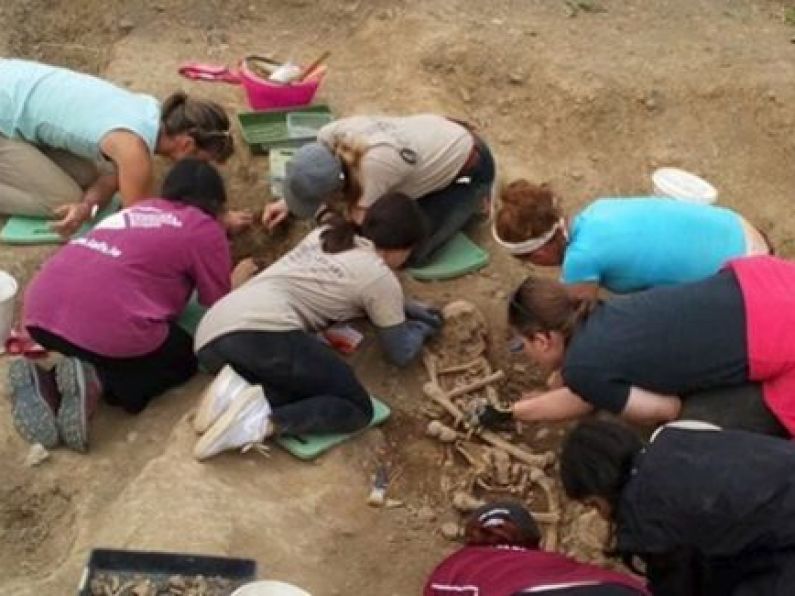By Louise Walsh
Experts at an archaeology field school in Trim, Co Meath have uncovered almost 30 skeletal remains of infants, many of whom they believe were buried there up until the early 20th century because they weren't baptised.
The experts at the Black Friary Field School say the remains of the tiny infants date back as far as medieval times - but they can date some after the Friary was demolished in the 18th century because the little bodies were interred in the rubble.
The little tots amount to some of the 130 remains of adults, children and infants found on part of the six-acre site where the graveyard had a long history of use, even after the medieval Dominican Friary was knocked.
"While the discoveries of the medieval burials were expected, the later infant burials were not and were emotional for archaeologists on site", according to principal investigator Finola O'Carroll.
"It was heartbreaking to discover these tiny remains among the rubble of the former Friary," she said.
"Many of the remains dated back to medieval times but we think those buried after the Friary was demolished in 1760 were babies who were stillborn or who died before they were christened and couldn't be buried on consecrated soil.
"We think these burials occurred here right up to the early or mid-1900s.
"Often, as well poverty had a part to play and babies were buried in the middle of the night because parents simply couldn't afford funeral costs. It's extremely sad."
All the remains found have been sent to be curated for research but Finola hopes they will be reinterred on the site again in the future.
Finola has been working on the dig since 2010 on one of the largest Dominical Friaries in Ireland which has attracted hundreds of students from all over the world who stay in Trim for four weeks to help excavate the site.
Over sixty students from Italy will land in Trim next month and each year, students from the Ohio State University in the US arrive for a cultural experience on the Friary, which was built in 1263
Other finds thrown up during excavation works include pottery fragments, pieces of chain mail, metal, nails and stained glass.
"Very fortunately, the stained glass which is very delicate and other finds are being conserved in the University of Cardiff by students as part of a degree in conservation," said Finola.
All other discoveries will be deposited with the National Museum, including remnants of Purbeck marble which indicates that it was an elaborately decorated Friary.
"Geoffrey De Geneville was the governor of the town at the time and was married to Matilda De lacy, the great granddaughter of Hugh De Lacy," she continued.
"Purbeck marble was very fashionable at the time and the King of England had two cloisters decorated in it so we think Geoffrey flattered the King by having the Cloister of the Friary built of it.
"It is a very elaborate Friary and one train of thought is that Geoffrey retired here to private apartments which is why the place was so big and so embellished.
[quote]In the 1750s, there was a building boom in Ireland and the Friary, which was no longer used, was demolished to use the building stone for other projects. All that was left was rubble.[/quote]
And speaking of rubble, Finola and her colleagues found themselves wading through a rubbish tip when they first moved onto the site eight years ago.
"People had forgotten the significance of the site and the burial grounds as living memory faded and the field had turned into a dumping ground and place for anti-social behaviour.
"We had to remove old bicycles mattresses, prams, toys, beds, even parts of old cars. We worked on the site and landscaped and fenced and built stone walls and even local teenagers built a community garden.
"We had great help from Meath Co. Council who own the site through a Gateway Project.
"Now families sit around picnic tables for lunch and although it's still a working project with plans for more improvements, it's transformed from what it once was."
[media=insta]]
The Black Friary Archaeology Field School will hold a community archaeological excavation until August 27th (closed on August 20th) from 10am to 4.30pm as part of heritage month.
The dig is open to all over 18 years of age and there will be a medieval family day on 18th August, complete with a mock dig, for children accompanied by an adult.
"During the dig we'll be uncovering sections of the gardens and exploring the bits and pieces relating to the lives of the friars which are still contained in the soil.
"Participants will be shown to trowel, sieve the soil for finds, wash animal bone and pottery and even document the finds."
Further information can be found at www.bafs.ie and the event is supported by Meath Co. Council.






